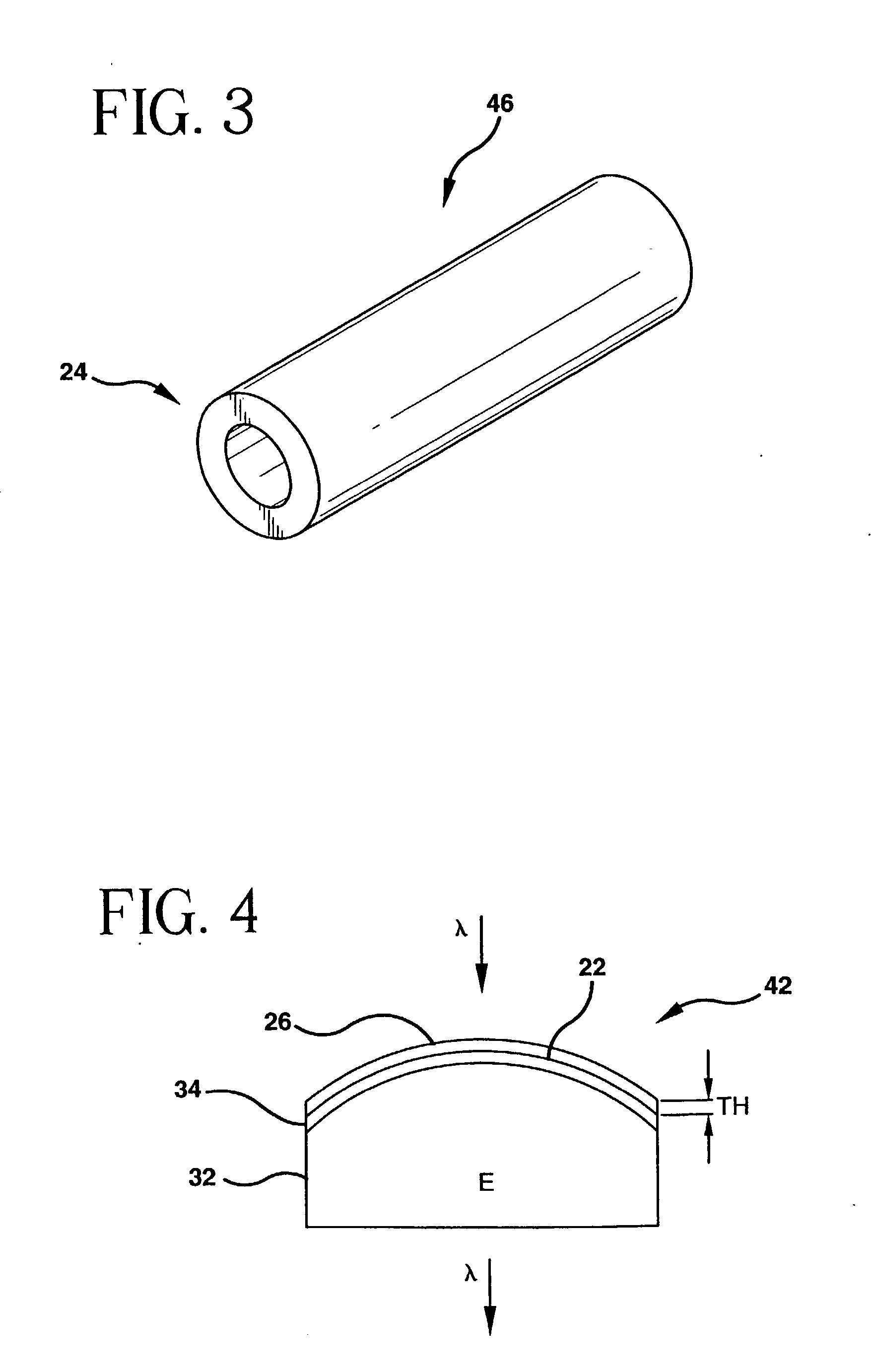Film coated optical lithography elements and method of making
a technology of optical lithography and film coating, which is applied in the direction of instruments, photomechanical equipment, sensing by electromagnetic radiation, etc., can solve the problems of economic manufacturability of optical coating, troublesome oxide optical films with tolerable transmission, and hinder commercial use and adoption of such shorter wavelengths in the manufacture of semiconductor integrated circuits
- Summary
- Abstract
- Description
- Claims
- Application Information
AI Technical Summary
Problems solved by technology
Method used
Image
Examples
Embodiment Construction
[0071] The silicon oxyfluoride glass of the invention preferably has very low levels of OH (<10 ppm wt. OH), very low trace levels of metal contaminants (<1 ppm wt.), low levels of molecular hydrogen (H.sub.2<5.times.10.sup.+16 molecules / cm.sup.3) and low levels of chlorine (Cl<10 ppm), and has a F wt. % content of 0.5-3 wt. %, so the glass is preferably provided by forming a soot which is then treated and consolidated to form the silicon oxyfluoride glass which can be further physically treated such as by crushing prior to coating formation.
[0072] The silicon oxyfluoride glass has a beneficial transmission of light in the below 193 nm vacuum ultraviolet lithography region centered around 157 nm.
[0073] The preferred approach for consolidating a soot preform into a silicon oxyfluoride glass includes drying the porous SiO.sub.2 particles in a He / Cl.sub.2 atmosphere between 1000-1100.degree. C. The particles are then heated in a helium fluorine doping atmosphere which includes a fluori...
PUM
| Property | Measurement | Unit |
|---|---|---|
| light wavelengths | aaaaa | aaaaa |
| transmission cut off wavelength | aaaaa | aaaaa |
| wavelength range | aaaaa | aaaaa |
Abstract
Description
Claims
Application Information
 Login to View More
Login to View More - R&D
- Intellectual Property
- Life Sciences
- Materials
- Tech Scout
- Unparalleled Data Quality
- Higher Quality Content
- 60% Fewer Hallucinations
Browse by: Latest US Patents, China's latest patents, Technical Efficacy Thesaurus, Application Domain, Technology Topic, Popular Technical Reports.
© 2025 PatSnap. All rights reserved.Legal|Privacy policy|Modern Slavery Act Transparency Statement|Sitemap|About US| Contact US: help@patsnap.com



